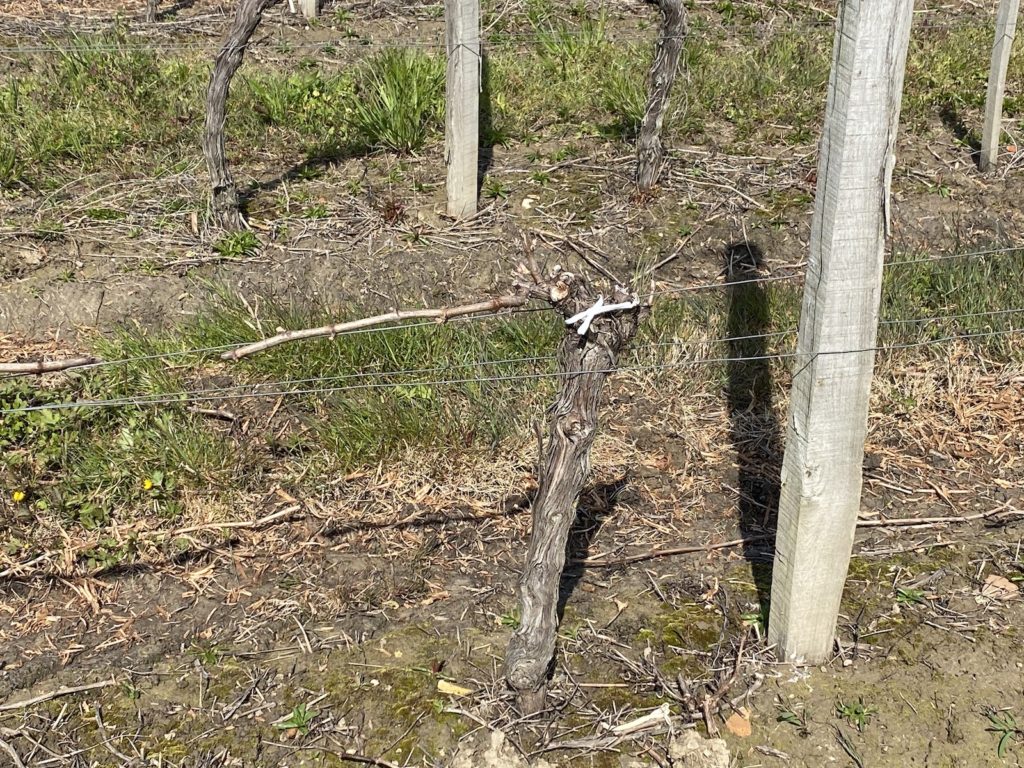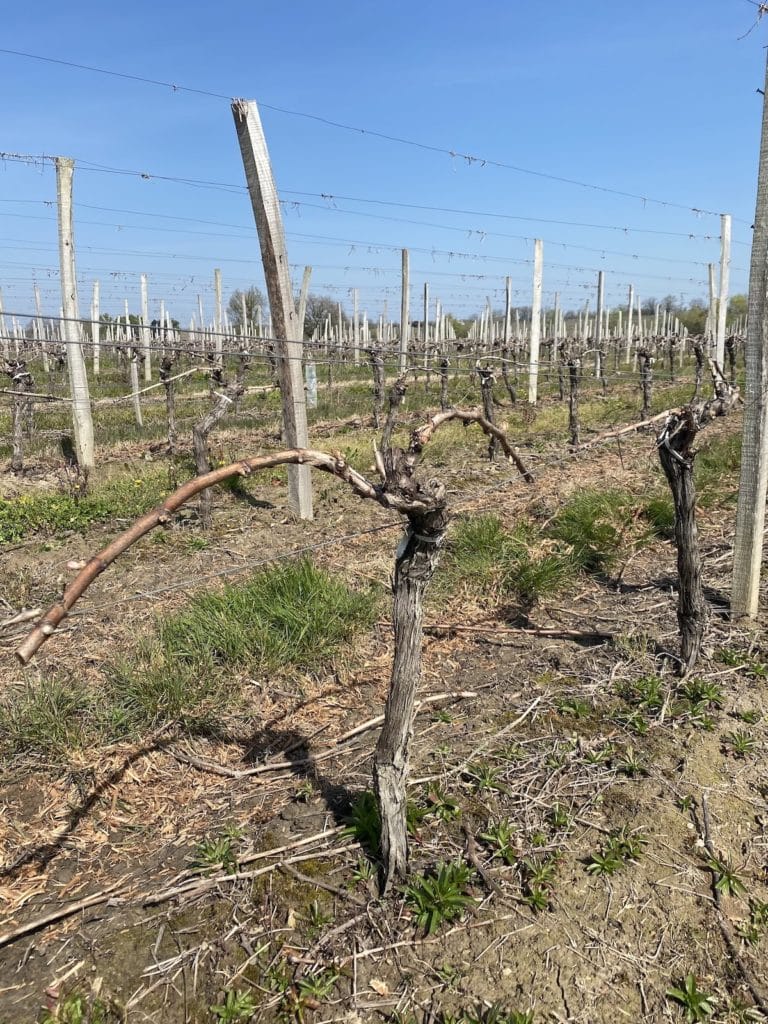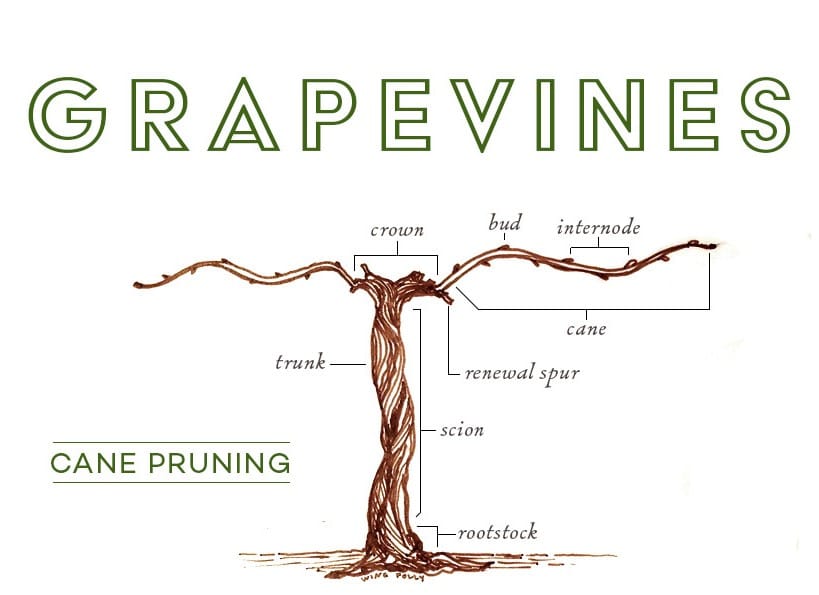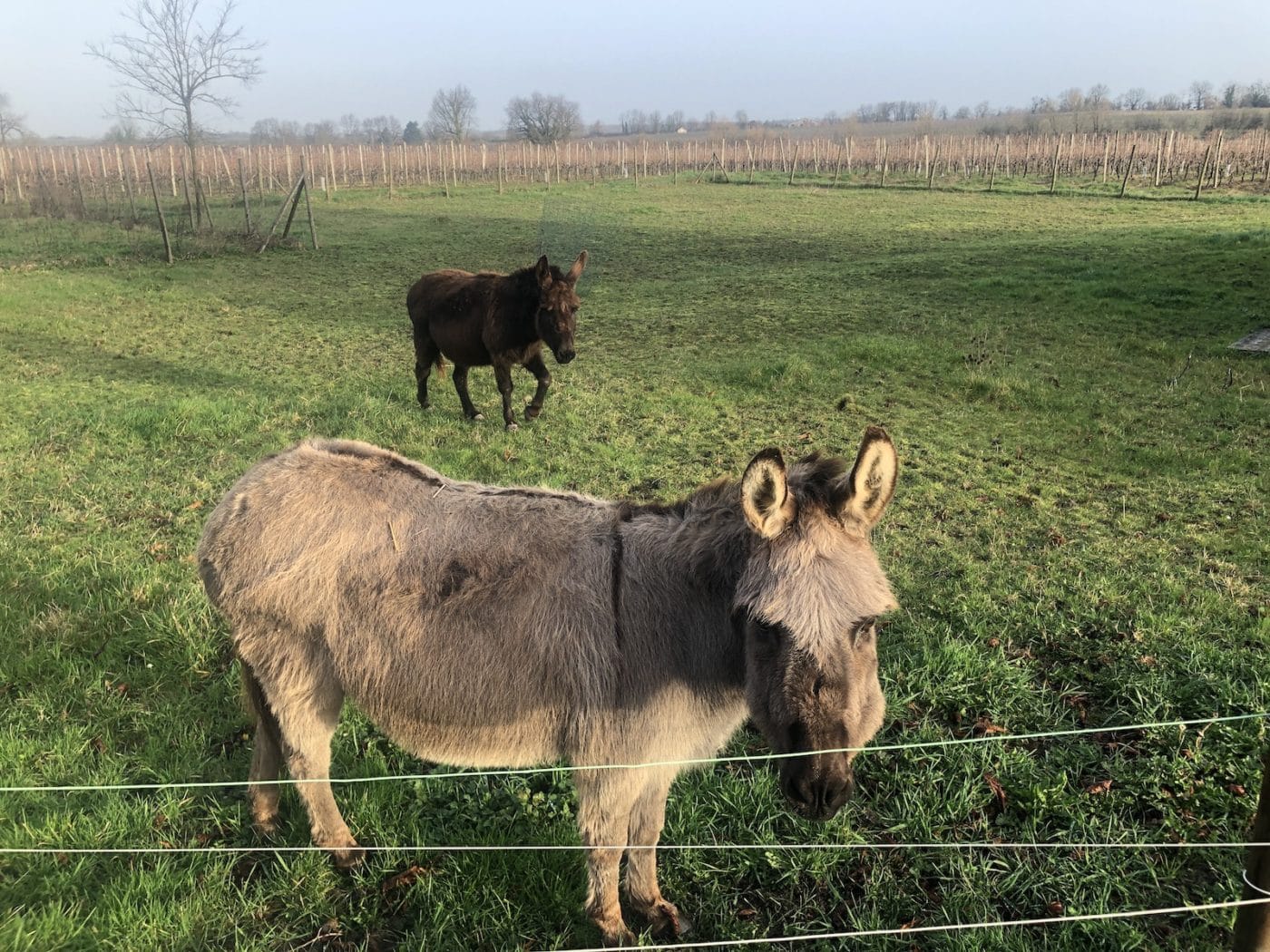Bordeaux vineyard legend holds that donkeys taught us how to prune. The story goes that a priest was visiting starving parishioners with supplies carried by his donkeys in early winter. Tethering his donkeys, he went into a dwelling to serve and care for those he was visiting. Anyone who has ever owned donkeys knows that they are notorious escape artists, especially when there are more than one of them together. The priest’s donkeys escaped into the neighbouring vineyard where they proceeded to feast on the post-harvest vines, not just eating the golden-brown vines leaves, but munching on the vines themselves right down to the vine stem branches. The donkeys did enough damage to cause the vineyard owner to question his faith, but come the next year, he observed that those vines that had been “pruned” by the donkeys were more vigorous and productive than those that had not been touched by them. So pruning began as an annual discipline to enhance plant health and production.
Pruning vineyards today is an essential part of the annual relationship between man and nature in the Bordeaux vineyards. I have heard experts refer to pruning as a “story” with numerous chapters that follow each other in sequence each subsequent year. So, the first thing the pruner must do is look at the plant and ask, “what is your story and what was written in the last chapter so that I may continue the story correctly?” The idea being that each vine is telling a story and the pruner must look carefully at the story being told by the plant through its movements and most importantly the cuts that have been made by those pruning in previous years. In an ideal world you want the same pruners in your vineyard year in year out.
Each branch, shoot and bud is communicating to the vineyard farmer and to maximize the results of the pruning the farmer must collaborate with the plant to ensure that the right part of the plant grows in the right way at the right time. It is a “story” because the expert pruner will see what was cut the year before and what the pruner (if it was someone different) was trying to do with the plant – leaving one part and cutting another.

Thanks to “Wine Folly” we can share some very helpful diagrams showing the common pruning methods used in Bordeaux vineyards. Cane pruning is typical in Bordeaux and specifically you will see “single guyot” and “double guyot.” As a side note, when I was in Tuscany with my friend and vineyard Master’s Circle colleague Riccardo Romolini, I learned that the single and double cordon method was more common there.

Guyot simple (single guyot) image tends to be more common with young plants – this is to allow the plant to establish more root strength in its formative years. Once stronger, guyot double pruning is more common unless the plant is the last plant of a row.

The Cane pruning approach in Bordeaux will therefore commonly follow the double guyot method once the vine’s roots are strong and established usually by the third year as long as the plant’s vigour is evident. Last year’s cane will be cut off and all of the small shoots, dead and dry wood are cut away as much as possible including around the crown. The pruner then chooses a healthy-looking cane ideally with a stem pointing downwards on each side of the crown. She will then cut the cane to the length that she wants (considering how many buds she wants – a function of production volume and strategy) and if she has a large vineyard she will clean away the buds since they may not be time to do it later in the year. A small vineyard owner will probably leave the buds on the cane since this is better for the sap movement early in the growing season and it is safer to leave the buds until all risk of frost has passed.
Then the key is to look for a renewal spur that is pointing downwards (see image). The reason for this is that the vine will naturally seek to grow upwards, so it helps balance the plant. This renewal spur provides the next chapter in the story and is the assurance of what is to come the next year. Each bud represents what will become two or three bunches of grapes so even at this early stage in the year the farmer can control production with the choice and length of the cane left for growth.

Here is a glossary of terms associated with pruning in Bordeaux
“Guyot simple” = single Guyot
“Guyot double” = double Guyot
“Pampre” = a bud or shoot removed during the year (this can be during the winter pruning or at any time)
“Cot” = this is a shoot left to grow out next year – in the image it is referred to as a renewal spur
“Bourgeon” = a bud – the bud is what holds the fruit and each bud will yield two to three bunches of grapes.
“Latte” = The cane
“Tronc” = the trunk of the vine
“Racine” = the root
“Pied” = the whole vine.
Written by Michael Baynes
